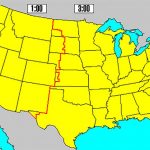Daylight Saving Time began on Sunday, and you should be furious
Daylight saving time, or DST, began in the US in 1918 as a way to conserve energy.
However, many Americans believe the practice is not worth the hassle, and studies suggest it may cause more problems than it solves.
There are two main proposals to get rid of DST: by creating fewer time zones or moving to one universal time.
Daylight Saving Time is a global ritual concept as dumb as its name implies.
On Sunday, March 11, right at 2:00 a.m., clocks and phones across North America and Europe jumped ahead one hour to begin Daylight Saving Time (DST) until next year. (And no, it’s not “savings” with an “s.”)
This act goes beyond a symbolic gesture to make it seem like there’s more light during the day (there won’t be). But it will rob humanity of billions of hours of sleep like an evil spacetime vampire.
Daylight Saving Time was created during World War I to decrease energy use. The practice was implemented year-round in 1942, during WWII. Not waking up in the dark, the thinking went, would decrease fuel use for lighting and heating — and help conserve energy supplies to win the day.
But nearly a century later, the US is a divided nation when it comes to DST. For example, a 2012 survey of 1,000 American adults by Rasmussen Reports found that 45% of adults think the practice is worth it, while more than 40% say it’s worthless.
Advocacy groups like Standardtime.com are trying to abolish the practice altogether. Energy-saving claims are “unproven,” they write: “If we are saving energy, let’s go year-round with daylight saving time. If we are not saving energy, let’s drop daylight saving time!”
More than 136,000 people have petitioned Congress to end Daylight Saving Time, and most of the 73,000-odd comments on the petition are vicious.
“Daylight saving time is an antiquated practice and serves no purpose in the modern world,” wrote Dustin M. from Kings Mountain, North Carolina. “It causes undo stress to millions of Americans and does nothing for anyone.”
“Changing the clock does not change the actual time and missing sleep is dangerous to our health,” said V.C. from Diamond, Missouri. “Please do away with this outdated practice.”
One anonymous petition-signer from Maryland said DST will make her routine for the next few months “consist of popping a lot of caffeine pills to stay awake during the day.”
We feel the animosity of these people, and here’s why.
The health and economic problems with daylight-saving
Earth at Night
NASA
According to Michael Downing, the author of “Spring Forward: The Annual Madness of Daylight-Saving Time,” early studies didn’t find evidence that DST actually decreases energy use.
In fact, sometimes the change seems to increase energy use.
For example, Indiana implemented Daylight Saving Time statewide in 2006. Afterward, people used less electricity for light, researchers saw, yet those gains were negated by an uptick in air conditioning use. This is likely because the 6 p.m. hour felt more like 5 p.m., when the sun still shines brightly in the summer and homes haven’t had the chance to cool off.
DST also increases gasoline consumption, something Downing says the petroleum industry has known since the 1930s. This is probably because evening activities — and the vehicle use they require — increase with that extra daylight.
Changing the clocks also causes air travel synchronization headaches, which sometimes leads to travel delays and lost revenue, airlines have reportedly said.
There are also health issues associated with the change. Similar to the way jet-lag makes you feel all out of whack, Daylight Saving Time is like scooting one time zone over. This can disrupt our sleep, metabolism, mood, stress levels, and other bodily rhythms. One study suggests recovery can take three weeks.
The sheer number of people impacted by DST all at once leads to some surprising associations, including a spike in heart attacks, increased numbers of work injuries, automobile accidents, suicides, and more in the days after.
Why keep it?
Despite those early studies about energy use, one analysis from 2008 did find a small amount of energy savings after we extended DST by four weeks in 2005.
According to the Christian Science Monitor:
“Most advocates cite a 2008 report to Congress by the Department of Energy which showed that total electricity savings from the extended daylight-saving period amounted to 1.3 terawatt-hours, or 0.03 percent of electricity consumption over the year. That’s a tiny number. But if electricity costs 10 cents per kilowatt, that means an estimated $130 million in savings each year.”
More evening light also inspires people to go out and spend money.
Downing told NPR that this comes in the form of things like shopping and even playing golf — the golf industry told Congress that an extra month of daylight-saving was worth $200 million in 1986. The BBQ industry said extending DST would boost sales by $100 million.
Extending Daylight Saving Time to November also might help the Halloween industry: The longer kids can trick-or-treat, the more candy you need to buy.
Changing the law can also be expensive. One legislature representative in Alberta, Canada, suggested that holding a referendum on DST may cost the province $2 million to $6 million, even if snuck into a standard election ballot, and that holding a no-DST vote on its own might cost $22 million to organize and execute.
A world divided on DST
Other areas of the world have gotten rid of Daylight Saving Time, or never had it to begin with.
The map above shows the breakdown. Blue areas observe DST, red areas never have, and orange areas once did but have since abolished it.
Some parts of the US have taken their own initiative not to observe Daylight Saving Time, including most of Arizona (excluding the Navajo and Hopi reservations in the northeast), and before 2006, parts of Indiana. Lawmakers in Utah introduced legislation to try to abolish DST in 2018 (one of several attempts), but the bill died in the state Senate.
A bill to abolish DST was once recommended for passage in Oklahoma in 2015, but it was not signed into law. However, the state is again considering passing an anti-DST bill.
The decision is up to the individual counties, but choosing not observe DST in a county where nearby cities do can be problematic.
What are the alternatives?
Standardtime.com has a unique suggestion.
Their proposal has only two time zones in the continental US that are two hours apart, which The Atlantic calls “a simple plan to fix [DST]”.
Compare that plan to the current state of things in the US, which is broken into four time zones: Eastern, Central, Mountain, and Pacific time, each one hour apart.
US time zones
These four time zones exist so that areas in the east of each time zone get sunrise at about the same time — the sun hits the eastern side of a time zone about an hour before it hits the western side in our current zones.
With Standardtime.com’stem, keeping the coasts only two hours apart would facilitate travel and meeting times. On the downside, sunrise and sunset would happen at wildly different times for many areas of the nation. Extending the eastern time zone into the middle of the country would mean sunrise would happen for some people very late in the morning.
For example, the sun rose in New York City at about 6:17 a.m. EST today and in Chicago at 7:17 a.m. CST; but if the two were in the same time zone, sunrise would be at 8:17 “Eastern Time” in Chicago.
Johns Hopkins University professors Richard Henry and Steven Hanke have come up with yet another possible fix: worldwide adoption of a single time zone. They argue that the internet has eliminated the need for discrete time zones across the globe, so we might as well just do away with them. The proposal also includes a 13-month “permanent calendar.” (The idea, understandably, has encountered some resistance.)
No plan will satisfy everyone. But that doesn’t mean daylight-saving time is good.
The absence of major energy-saving benefits from DST — along with its death toll, health impacts, and economic ramifications— are reason enough to get rid of the ritual altogether.
Jennifer Welsh and Sarah Kramer contributed to previous versions of this post.
This is an opinion column. The thoughts expressed are those of the author.
This column does not necessarily reflect the opinion of Business Insider.
IMAGES:
Clocks daylight saving time Shutterstock
light bulb Wikimedia Commons
standard time zone anti daylight saving time Standardtime.com
daylight saving time zones countries states accept reject march 2018 Paul Eggert wikipedia ccbysa3
Where in the world daylight saving time is used (blue), abolished (orange), and never instituted (red), as of March 2018.Paul Eggert/Wikipedia (CC BY-SA 3.0)
For more on this story go to: http://www.businessinsider.com/when-does-daylight-savings-time-start-march-2018-3











